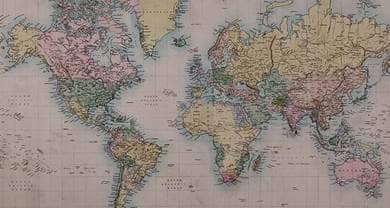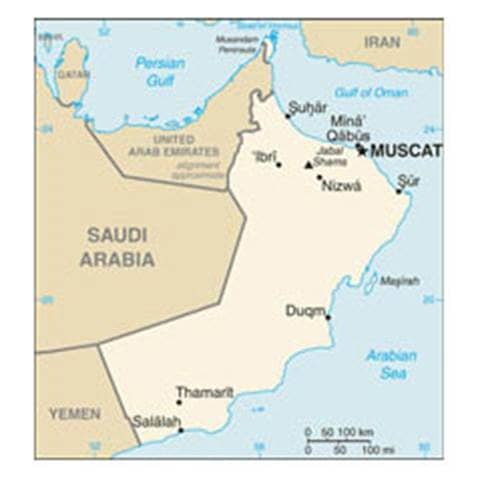- Trending:
- Easter
- |
- Lent
- |
- Forgiveness
- |
- Resurrection
- |
- Joy
- |
- Feminism

RELIGION LIBRARY
Oman

The country has an area of 119,498 square miles and a population of 3.3 million, of whom 2.4 million are citizens. The Government does not keep statistics on religious affiliation, but almost all citizens are either Ibadhi or Sunni Muslims, with Shi'a Muslims forming a small but well-integrated minority of less than 5 percent of the population, concentrated in the capital area and along the northern coast. Ibadhism, a form of Islam distinct from Shi'ism and the "orthodox" schools of Sunnism, historically has been the country's dominant religious group, and the Sultan is a member of the Ibadhi community.
The majority of non-Muslims are noncitizen immigrant workers from South Asia, although there are small communities of ethnic Indians (Hindus and Christians) who have been naturalized.
Non-Muslim religious communities, made up primarily of expatriate workers, individually constitute less than 5 percent of the population and include various groups of Hindus, Buddhists, Sikhs, Baha'is, and Christians. Christian communities are centered in the major urban areas of Muscat, Sohar, and Salalah, and include Roman Catholic, Eastern Orthodox, and various Protestant congregations. These groups tend to organize along linguistic and ethnic lines. More than fifty different Christian groups, fellowships, and assemblies are active in the Muscat metropolitan area. There are two Hindu temples and one Sikh temple in Muscat, as well as additional temples located on worksites, where the religious community located there is large enough to support them.
| Population | Population (2009 est.) 3,418,085 |
| Religious Demographics | Ibadhi Muslim 75%, other (includes Sunni Muslim, Shi'a Muslim, Hindu) 25% |
| Ethnic Groups | Ethnic Groups Arab, Baluchi, South Asian (Indian, Pakistani, Sri Lankan, Bangladeshi), African |
| Languages | Languages Arabic (official), English, Baluchi, Urdu, Indian dialects |
| Country Flag |  |










